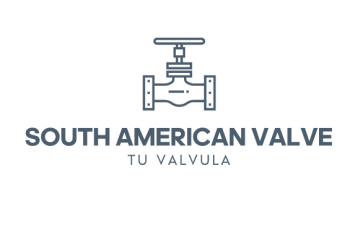Inverted Bucket Steam Trap
South American Valve is a leading Inverted Bucket Steam Trap Supplier in Chile. An inverted steam trap, also known as an inverted bucket steam trap, is a type of mechanical steam trap used for the removal of condensate from steam systems. It operates based on the principle of buoyancy and utilizes an inverted bucket mechanism to open and close the valve.
An inverted steam trap consists of a body, an inverted bucket, a valve mechanism, and a valve seat. The body is typically made of durable materials such as cast iron or stainless steel to withstand the conditions of the steam system.
South American Valve is a leading Inverted Bucketed Steam Trap Supplier in Chile. Inverted steam traps are commonly used in various industrial applications where efficient condensate removal and steam system performance are essential. They are suitable for steam mains, process equipment, heat exchangers, and other steam system components. Their reliable operation, versatility, and durability make them a preferred choice in many industries.
Parts
Body
Inverted bucket
Lever
Seat
Disc
Strainer
Air vent
cover
Benefits
Efficient Condensate Removal: Inverted steam traps are highly efficient in removing condensate from steam systems. The inverted bucket mechanism allows for immediate response to changes in condensate levels, ensuring prompt drainage and preventing the backup of condensate, which can lead to reduced heat transfer and system inefficiencies.
Steam Loss Prevention: Inverted steam traps provide excellent steam loss prevention. When the inverted bucket is lifted by the accumulation of condensate, it closes the valve tightly, preventing the escape of steam. This maximizes energy efficiency and reduces operating costs associated with steam loss.
Wide Pressure Range: Inverted steam traps can operate effectively across a wide range of steam pressures. They are suitable for both low-pressure and high-pressure steam systems, ensuring reliable condensate removal regardless of the pressure conditions.
Versatility: Inverted steam traps are versatile and can handle varying condensate loads and flow conditions. They are designed to accommodate fluctuations in condensate flow rates without compromising their ability to remove condensate promptly.
Durability and Longevity: Inverted steam traps are known for their robust construction and durability. They are designed to withstand the harsh conditions of steam systems, including high temperatures and pressure fluctuations. This results in a long service life and reduced maintenance requirements.
Reliable Operation: Inverted steam traps have a simple and reliable operation. They do not require external power or control systems and work based on the principle of buoyancy. The inverted bucket mechanism provides a positive and consistent sealing action, ensuring reliable performance over time.
Low Maintenance Requirements: Inverted steam traps have relatively low maintenance requirements. Their robust construction and simple design contribute to their longevity and reduce the need for frequent maintenance. Routine inspections and occasional cleaning are typically sufficient to maintain their optimal performance.
Cost-Effective Solution: Inverted steam traps offer a cost-effective solution for condensate removal. Their efficiency in removing condensate and preventing steam loss contributes to energy savings and reduces operating costs. Additionally, their durability and long service life result in lower replacement and maintenance expenses over time.
Applications
Steam Mains and Distribution Systems: Inverted steam traps are commonly used in steam mains and distribution systems to remove condensate and ensure the efficient flow of steam to different parts of the system. They help maintain proper steam pressure, prevent condensate buildup, and ensure effective heat transfer.
Process Equipment: Inverted steam traps find application in various process equipment, such as heat exchangers, steam jacketed vessels, and steam-driven machinery. They effectively drain condensate from the equipment, preventing the accumulation of condensate that can hinder the performance and efficiency of the process.
HVAC Systems: Inverted steam traps are used in heating, ventilation, and air conditioning (HVAC) systems that utilize steam for heating or humidification purposes. They help remove condensate from the steam distribution lines, ensuring efficient heat transfer and maintaining the desired indoor climate.
Power Generation: Inverted steam traps have applications in power plants, particularly in steam distribution and condensate recovery systems. They efficiently remove condensate from steam lines, ensuring smooth operation of turbines, boilers, and other power generation equipment.
Textile Industry: Inverted steam traps are used in textile processing applications, such as dyeing machines, fabric dryers, and steam chambers. They efficiently remove condensate, ensuring consistent heat transfer and proper processing of textiles.
Petrochemical and Refining: Inverted steam traps have applications in petrochemical and refining processes, including steam tracing, steam injection, and steam distribution. They ensure the efficient removal of condensate, preventing any adverse effects on process efficiency and equipment performance.
Description:
Body: Carbon Steel, Stainless Steel, Ductile Iron
Float ball: SS304
Bolt: SS304
Bracket: SS304
Pin: SS304
Bonnet: Carbon Steel, CF8
Disc: 2Cr13, SS304
Seat: 2Cr13, SS304
Gasket: Graphite+SS304
Nominal Diameter: DN20 to DN32
Nominal Pressure: PN10 to PN64
Inverted Bucket Steam Trap


